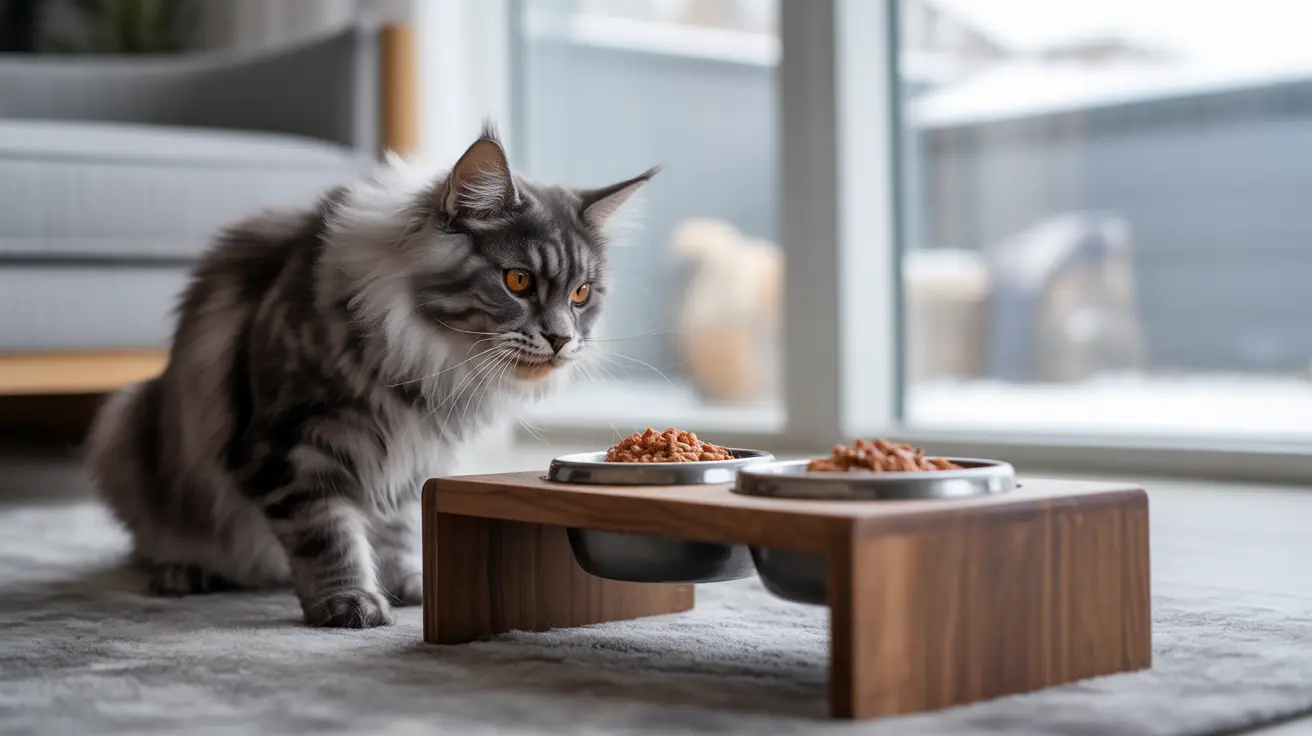When an elderly cat stops eating, it can be deeply concerning for pet parents. Loss of appetite in senior cats isn't just a minor inconvenience – it's often a warning sign that requires attention and understanding. As cats age, their relationship with food can change dramatically due to various health and environmental factors.
In this comprehensive guide, we'll explore the many reasons behind appetite loss in senior cats, identify crucial warning signs, and provide practical solutions to help your aging feline companion maintain proper nutrition.
Common Causes of Senior Cat Appetite Loss
Medical Conditions
Many health issues can cause older cats to lose interest in food. Kidney disease, hyperthyroidism, and diabetes are particularly common in senior cats. These conditions often cause nausea or changes in metabolism that affect appetite. Additionally, cancers and inflammatory conditions can significantly impact a cat's desire to eat.
Dental Problems
Dental disease affects up to 85% of cats over the age of three, with senior cats being particularly vulnerable. Painful teeth, inflamed gums, or oral infections can make eating uncomfortable or even excruciating. Watch for signs like drooling, pawing at the mouth, or preferring soft food over kibble.
Age-Related Changes Affecting Appetite
Decreased Sense of Smell
Senior cats often experience a diminished sense of smell, which directly affects their appetite since cats rely heavily on scent to stimulate hunger. This natural aging process can make previously appealing foods seem less enticing.
Mobility Issues
Arthritis and joint problems can make it difficult for older cats to reach their food bowls, especially if they need to climb stairs or jump onto elevated surfaces. This physical challenge might discourage them from eating regularly.
Solutions and Support Strategies
Making Food More Appealing
Enhance your senior cat's interest in food by:
- Warming wet food slightly to release more aroma
- Adding low-sodium chicken broth to dry food
- Offering various textures and flavors
- Placing multiple food stations around the house for easy access
Environmental Adjustments
Create a comfortable eating environment by:
- Providing elevated food bowls to reduce neck strain
- Ensuring food and water bowls are in quiet, low-traffic areas
- Using non-slip mats under feeding stations
- Maintaining consistent feeding schedules
When to Seek Veterinary Care
If your senior cat hasn't eaten for 24 hours or shows additional concerning symptoms, don't wait to contact your veterinarian. Quick intervention can prevent serious complications like hepatic lipidosis, a potentially fatal liver condition that can develop when cats stop eating.
Frequently Asked Questions
Why won't my old cat eat and what should I do?
Senior cats may stop eating due to medical conditions, dental problems, or age-related changes. First, ensure their food is easily accessible and appealing. If the appetite loss persists for more than 24 hours, consult your veterinarian immediately.
How can I tell if my senior cat's loss of appetite is serious or just due to aging?
Watch for additional symptoms like weight loss, lethargy, vomiting, or changes in bathroom habits. If your cat shows any of these signs or refuses food for more than a day, the situation requires veterinary attention.
What health problems cause older cats to stop eating and how can I help?
Common health issues include kidney disease, dental problems, thyroid disorders, and digestive issues. Help by keeping your cat comfortable, offering appealing food options, and maintaining regular veterinary check-ups.
Can dental issues make my elderly cat not want to eat and how do I recognize them?
Yes, dental problems often cause appetite loss in senior cats. Look for signs like bad breath, drooling, dropping food while eating, or favoring one side of the mouth when chewing.
What are the best ways to encourage an old cat to eat when they refuse food?
Try warming their food, offering different textures, using appetite stimulants (with veterinary approval), and ensuring comfortable, stress-free feeding locations. Sometimes hand-feeding or gentle coaxing can help restart their interest in eating.






